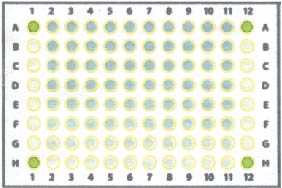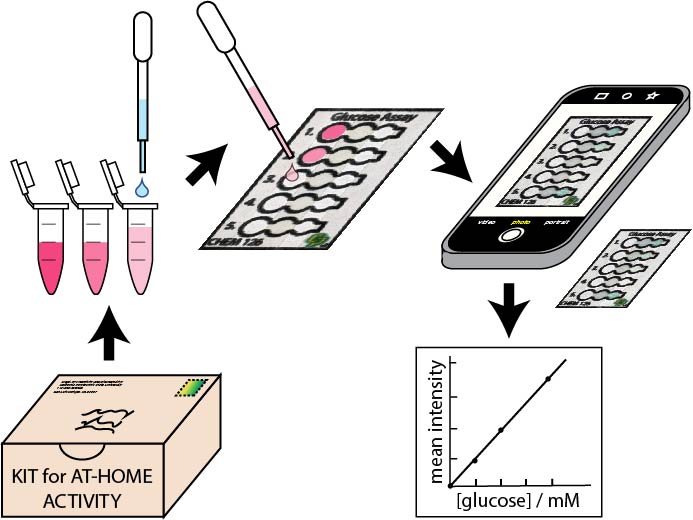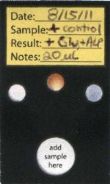MARTINEZ RESEARCH GROUP|California Polytechnic State University, San Luis Obispo
RESEARCH |
||
| Fabrication of Paper-Based Fluidic Devices (microPADs) |
A simple microPAD patterned by wax printing |
|
MicroPADs (short for microfluidic paper-based analytical device) are an emerging class of fluidic devices made out of paper that is patterned with hydrophobic inks to define channels and test zones. Dr. Martinez fabricated the world's first microPAD in 2006, while pursuing his PhD under the direction of George Whitesides at Harvard University. MicroPADs have since gained wide attention for applications in point-of-care diagnostic devices for use in resource-limited settings (i.e., remote areas with no electricity, running water or trained medical personnel). The technology for fabricating microPADs is constantly evolving, and we continually work to improve our fabrication techniques in order to simplify the fabrication process and add capabilities to the devices. You can find our current methods under "Methods." |
||
| Paper-Based Diagnotics |
A fully enclosed microPAD after detecting glucose (center) and alkaline phosphatase (right). The test zone on the left was a negative control. |
|
The primary application of microPADs is as platforms for low-cost point-of-care diagnostic devices. We work on developing, optimizing and characterizing new assays that are compatible with the paper-based platform. |
||
| MicroPADs as Tools for Research |  |
|
Aside from being useful as point-of-care diagnostic devices, microPADs are excellent tools for basic reasearch. We are developing high-throughput assays to investigate the stabilizing effects of various reagents on enzymes dried on paper |
||
| MicroPADs as Tools for Teaching |  |
|
The low-cost and low reagent requirements of microPADs makes them well-suited for use in laboratory classrooms . We are developing experiments and demonstrations that can be incorporated into the undergraduate curriculum. |
![]()
© 2012 A. W. Martinez. All rights reserved

